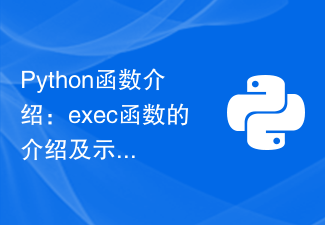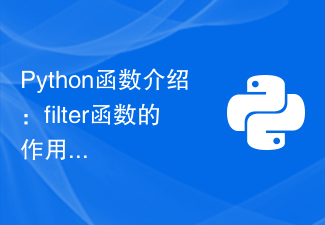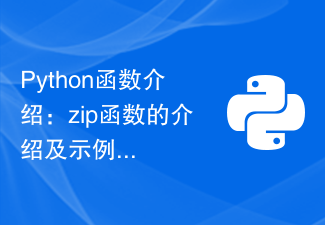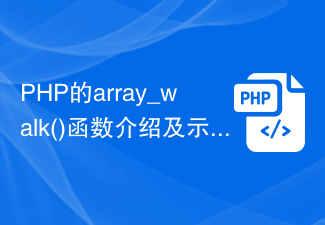socket.io為什麼會誕生呢?請看下面文字說明。
為什麼需要socket.io?
node.js提供了高效率的服務端運作環境,但由於瀏覽器端對HTML5的支援不一,為了相容於所有瀏覽器,提供卓越的即時的使用者體驗,並且為程式設計師提供用戶端與服務端一致的程式設計體驗,於是socket.io誕生。
socket.io設計的目標是支援任何的瀏覽器,任何Mobile設備。目前支援主流的PC瀏覽器(IE,Safari,Chrome,Firefox,Opera等),Mobile瀏覽器(iphone Safari/ipad Safari/android WebKit/WebOS WebKit等)。
socket.io基於node.js並簡化了WebSocket API,統一了各種通訊API。它支援:WebSocket, Flash Socket, AJAX long-polling, AJAX multipart streaming, Forever IFrame, JSONP polling。
socket.io解決了即時的通訊問題,並統一了服務端與客戶端的程式設計方式。啟動了socket以後,就像建立了一條客戶端與服務端的管道,兩邊可以互通有無。
安裝
在命令列執行:npm install socket.io 即可安裝。
服務端程式設計模型
服務端程式設計還是與一般伺服器一樣,啟動伺服器,提供服務,處理事件。
例如下面的server.js:
var http = require('http')
, url = require('url')
, fs = require('fs')
, server;
server = http.createServer(function(req, res){
// your normal server code
var path = url.parse(req.url).pathname;
switch (path){
case '/':
res.writeHead(200, {'Content-Type': 'text/html'});
res.write('<h1 id="Hello-Try-the-a-href-index-html-Socket-io-Test-a">Hello! Try the <a href="/index.html">Socket.io Test</a></h1>');
res.end();
break;
case '/index.html':
fs.readFile(__dirname + path, function(err, data){
if (err) return send404(res);
res.writeHead(200, {'Content-Type': path == 'json.js' ? 'text/javascript' : 'text/html'})
res.write(data, 'utf8');
res.end();
});
break;
default: send404(res);
}
}),
send404 = function(res){
res.writeHead(404);
res.write('404');
res.end();
};
server.listen(8080);
var io = require('socket.io').listen(server);
io.sockets.on('connection', function(socket){
console.log("Connection " + socket.id + " accepted.");
socket.on('message', function(message){
console.log("Received message: " + message + " - from client " + socket.id);
});
socket.on('disconnect', function(){
console.log("Connection " + socket.id + " terminated.");
});
});
客戶端程式設計模型
客戶端程式設計也是相似的處理方式,連接伺服器,互動資訊。
例如下面的index.html頁面:
<!doctype html>
<html>
<head>
<title>Socket.io Test</title>
<script src="/json.js"></script> <!-- for ie -->
<script src="/socket.io/socket.io.js"></script>
</head>
<body>
<script>
var socket;
var firstconnect = true;
function connect() {
if(firstconnect) {
socket = io.connect(null);
socket.on('message', function(data){ message(data); });
socket.on('connect', function(){ status_update("Connected to Server"); });
socket.on('disconnect', function(){ status_update("Disconnected from Server"); });
socket.on('reconnect', function(){ status_update("Reconnected to Server"); });
socket.on('reconnecting', function( nextRetry ){ status_update("Reconnecting in "
+ nextRetry + " seconds"); });
socket.on('reconnect_failed', function(){ message("Reconnect Failed"); });
firstconnect = false;
}
else {
socket.socket.reconnect();
}
}
function disconnect() {
socket.disconnect();
}
function message(data) {
document.getElementById('message').innerHTML = "Server says: " + data;
}
function status_update(txt){
document.getElementById('status').innerHTML = txt;
}
function esc(msg){
return msg.replace(/</g, '<').replace(/>/g, '>');
}
function send() {
socket.send("Hello Server!");
};
</script>
<h1 id="Socket-io-Test">Socket.io Test</h1>
<div><p id="status">Waiting for input</p></div>
<div><p id="message"></p></div>
<button id="connect" onClick='connect()'/>Connect</button>
<button id="disconnect" onClick='disconnect()'>Disconnect</button>
<button id="send" onClick='send()'/>Send Message</button>
</body>
</html>
注意事項
1. 啟動伺服器還是交給node,打開命令列窗口,定位到server.js所在資料夾,輸入node server.js啟動伺服器。
在上面的index.html中,注意這行:。如果不想使用本地的socket.io腳本,可
以直接使用下面這個公開的腳本:
<script src="http://cdn.socket.io/stable/socket.io.js"></script>
另外需要注意這一行:socket = io.connect(null)。
這裡的null代表連接本地服務,可以換成"localhost",效果也是一樣的。
2. 可以使用socket.io直接啟動http服務。
例如:
var io = require('socket.io').listen(80);
io.sockets.on('connection', function (socket) {
io.sockets.emit('this', { will: 'be received by everyone'});
});
3. socket.io可以直接透過send方法傳送訊息,使用message事件接收訊息,例如:
//server.js
var io = require('socket.io').listen(80);
io.sockets.on('connection', function (socket) {
socket.on('message', function () { });
});
//index.html
<script>
var socket = io.connect('http://localhost/');
socket.on('connect', function () {
socket.send('hi');
socket.on('message', function (msg) {
// my msg
});
});
</script>
4. 發送和處理資料
兩端可互發事件,互發數據,相互通訊。發送事件的程式碼為:socket.emit(action, data, function),其中action為事件的名稱,data為數據,function為回呼函數;處理事件程式碼為:socket.on(action,function),如果emit傳送的時候有資料data,則function中參數包含了這個資料。 socket.io除了發送和處理內建事件,如connect, disconnect, message。也允許發送和處理自訂事件,例如:
//服務端:
io.sockets.on('connection', function (socket) {
socket.emit('news', { hello: 'world' });
socket.on('my other event', function (data) {
console.log(data);
});
});
//客戶端:
<script src="/socket.io/socket.io.js"></script>
<script>
var socket = io.connect('http://localhost');
socket.on('news', function (data) {
console.log(data);
socket.emit('my other event', { my: 'data' });
});
</script>
5. 從上面可以看出來,發送資料的時候,send和emit是都可以使用的。只不過emit更是強化了自訂事件的處理。
6. 可以在服務端使用socket的get/set方法儲存客服端的相關數據,例如:
//服務端
var io = require('socket.io').listen(80);
io.sockets.on('connection', function (socket) {
socket.on('set nickname', function (name) {
socket.set('nickname', name, function () { socket.emit('ready'); });
});
socket.on('msg', function () {
socket.get('nickname', function (err, name) {
console.log('Chat message by ', name);
});
});
});
//客戶端
<script>
var socket = io.connect('http://localhost');
socket.on('connect', function () {
socket.emit('set nickname', confirm('What is your nickname?'));
socket.on('ready', function () {
console.log('Connected !');
socket.emit('msg', confirm('What is your message?'));
});
});
</script>
7. 可以廣播訊息,例如聊天室中給除了目前socket連線外的所有人發訊息。
var io = require('socket.io').listen(80);
io.sockets.on('connection', function (socket) {
socket.broadcast.emit('user connected');
});
8. 可以在同一次連結中,建立多個互相獨立的通道,而不是建立多次連結。這個官方叫法是“多個namespace”,例如官方的例子:
var io = require('socket.io').listen(80);
//Server
var chat = io
.of('/chat')
.on('connection', function (socket) {
socket.emit('a message', {
that: 'only'
, '/chat': 'will get'
});
chat.emit('a message', {
everyone: 'in'
, '/chat': 'will get'
});
});
var news = io
.of('/news')
.on('connection', function (socket) {
socket.emit('item', { news: 'item' });
});
//Client
<script>
var chat = io.connect('http://localhost/chat')
, news = io.connect('http://localhost/news');
chat.on('connect', function () {
chat.emit('hi!');
});
news.on('news', function () {
news.emit('woot');
});
</script>
socket.io的設定
socket.io的設定很簡單,如果配置過express的話,你會發現它們幾乎是使用差不多的方式。先看個小例子:
var io = require('socket.io').listen(80);
io.configure('production', function(){
io.enable('browser client etag');
io.set('log level', 1);
io.set('transports', [
'websocket'
, 'flashsocket'
, 'htmlfile'
, 'xhr-polling'
, 'jsonp-polling'
]);
});
io.configure('development', function(){
io.set('transports', ['websocket']);
});
可以看到,socket.io使用configure, set, enable, disable進行設定。
1. 使用configure方法來設定不同的運作環境下的行為;就是說在不同的環境下,啟用不同的設定選項。 configure的第一個參數是運作環境,第二個參數是進行設定的function。運行環境典型的如production或是development,當然這裡可以使任意的字串。如果configure的第一個參數省略的話,表示後面的配置是公用的,不管是什麼環境下,都有效。
2. 配置好各種運作環境了,那麼如何設定目前運作在那個環境下呢?這個是透過在命令列中修改環境變數NODE_ENV的值來實現的。
3. 在configure的設定函數中,我們可以使用set, enable, disable來設定相關選項。
4. 具體可以設定的項目參考:https://github.com/LearnBoost/Socket.IO/wiki/Configuring-Socket.IO
實用參考
socket.io介紹:http://davidchambersdesign.com/getting-started-with-socket.io/
socket.io安裝與使用說明:http://socket.io/
socket.io Wiki:https://github.com/LearnBoost/Socket.IO/wiki
 Python函数介绍:exec函数的介绍及示例Nov 03, 2023 pm 02:09 PM
Python函数介绍:exec函数的介绍及示例Nov 03, 2023 pm 02:09 PMPython函数介绍:exec函数的介绍及示例引言:在Python中,exec是一种内置函数,它用于执行存储在字符串或文件中的Python代码。exec函数提供了一种动态执行代码的方式,使得程序可以在运行时根据需要生成、修改和执行代码。本文将介绍exec函数的使用方法,并给出一些实际的代码示例。exec函数的使用方法:exec函数的基本语法如下所示:exec
 Python函数介绍:abs函数的用法和示例Nov 03, 2023 pm 12:05 PM
Python函数介绍:abs函数的用法和示例Nov 03, 2023 pm 12:05 PMPython函数介绍:abs函数的用法和示例一、abs函数的用法介绍在Python中,abs函数是一个内置函数,用于计算给定数值的绝对值。它可以接受一个数字参数,并返回该数字的绝对值。abs函数的基本语法如下:abs(x)其中,x是要计算绝对值的数值参数,可以是整数或浮点数。二、abs函数的示例下面我们将通过一些具体的示例来展示abs函数的用法:示例1:计算
 Python函数介绍:sorted函数的功能和示例Nov 03, 2023 pm 02:47 PM
Python函数介绍:sorted函数的功能和示例Nov 03, 2023 pm 02:47 PMPython函数介绍:sorted函数的功能和示例Python是一门非常强大的编程语言,拥有丰富的内置函数和模块。在这个系列文章中,我们将逐一介绍Python常用的函数,并提供相应的示例来帮助读者更好地理解和应用这些函数。本篇文章将详细介绍sorted函数的功能和示例。sorted函数用于对可迭代对象进行排序,并返回排序后的新列表。可以用于对数字、字
 PHP中endwhile关键字的作用和示例Jun 28, 2023 pm 08:00 PM
PHP中endwhile关键字的作用和示例Jun 28, 2023 pm 08:00 PMPHP中endwhile关键字的作用和示例在PHP中,endwhile是一种控制结构,用来实现while循环。它的作用是让程序在满足指定条件的情况下,重复执行一段代码块,直到条件不再满足。endwhile的语法形式如下:while(condition)://循环体代码endwhile;在这个语法中,condition是一个逻辑表达式,当该表达
 Python函数介绍:filter函数的作用和示例Nov 04, 2023 am 10:13 AM
Python函数介绍:filter函数的作用和示例Nov 04, 2023 am 10:13 AMPython函数介绍:filter函数的作用和示例Python是一种功能强大的编程语言,提供了许多内置的函数,其中之一就是filter函数。filter函数用于过滤列表中的元素,并返回满足指定条件的元素组成的新列表。在本文中,我们将介绍filter函数的作用,并提供一些示例来帮助读者理解其用法和潜力。filter函数的语法如下:filter(function
 Python函数介绍:zip函数的介绍及示例Nov 03, 2023 pm 02:02 PM
Python函数介绍:zip函数的介绍及示例Nov 03, 2023 pm 02:02 PMPython函数介绍:zip函数的介绍及示例Python是一种高级语言,它提供了许多有用的函数来帮助开发人员快速地编写程序。其中一个函数就是zip函数。Zip函数是Python中的内置函数之一,它可以接受一组可迭代对象(包括列表、元组、集合和字典等),并返回一个由这些可迭代对象中的元素按顺序成对组成的元组。Zip函数可以用于多种情况,例如:1.将两个列表的元
 PHP的array_walk()函数介绍及示例使用Jun 27, 2023 pm 03:31 PM
PHP的array_walk()函数介绍及示例使用Jun 27, 2023 pm 03:31 PM在PHP中,有很多实用的函数可以帮助我们更方便地处理数组。其中,array_walk()函数就是一个非常实用的函数,它可以对数组中的每个元素进行指定的操作,让我们来了解一下。array_walk()函数介绍array_walk()函数是一个用于处理数组的函数,它的语法结构如下:array_walk(array&$array,callable$callb
 Python函数介绍:range函数的介绍及示例Nov 04, 2023 am 10:10 AM
Python函数介绍:range函数的介绍及示例Nov 04, 2023 am 10:10 AMPython函数介绍:range函数的介绍及示例Python是一种广泛应用于各种领域的高级编程语言,它具有简单易学的特点,并且有着丰富的内置函数库。其中,range函数是Python中常用的一个内置函数之一。本文将详细介绍range函数的功能以及使用方法,并通过实例来演示其具体的应用。range函数是用来生成一个整数序列的函数,它接受三个参数,分别是起始值(


熱AI工具

Undresser.AI Undress
人工智慧驅動的應用程序,用於創建逼真的裸體照片

AI Clothes Remover
用於從照片中去除衣服的線上人工智慧工具。

Undress AI Tool
免費脫衣圖片

Clothoff.io
AI脫衣器

AI Hentai Generator
免費產生 AI 無盡。

熱門文章

熱工具

MantisBT
Mantis是一個易於部署的基於Web的缺陷追蹤工具,用於幫助產品缺陷追蹤。它需要PHP、MySQL和一個Web伺服器。請查看我們的演示和託管服務。

VSCode Windows 64位元 下載
微軟推出的免費、功能強大的一款IDE編輯器

Dreamweaver Mac版
視覺化網頁開發工具

SublimeText3 英文版
推薦:為Win版本,支援程式碼提示!

記事本++7.3.1
好用且免費的程式碼編輯器






